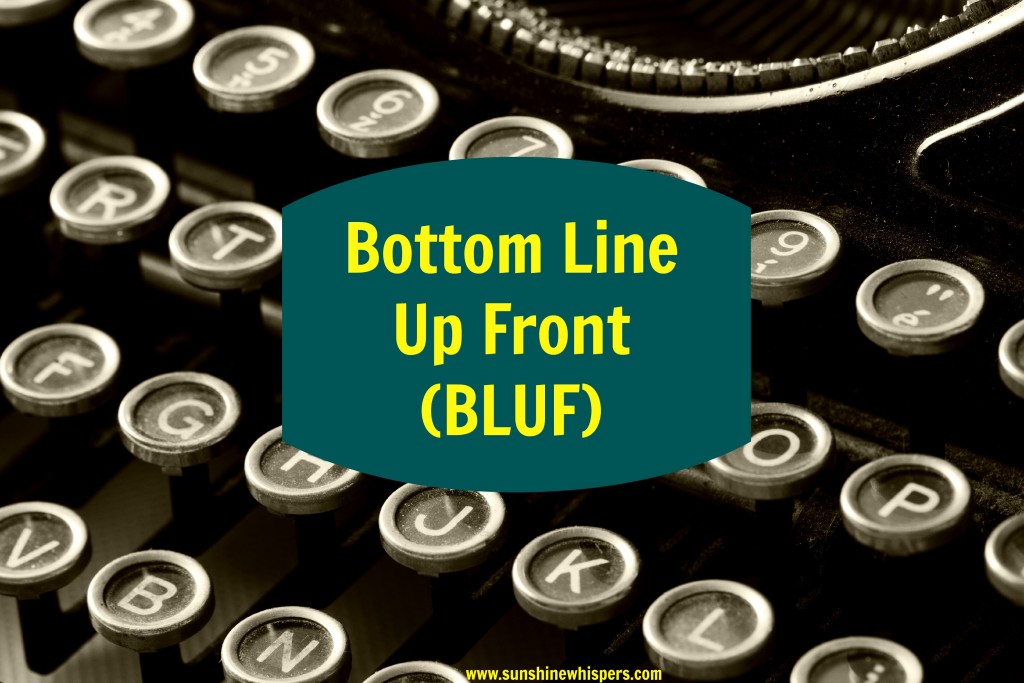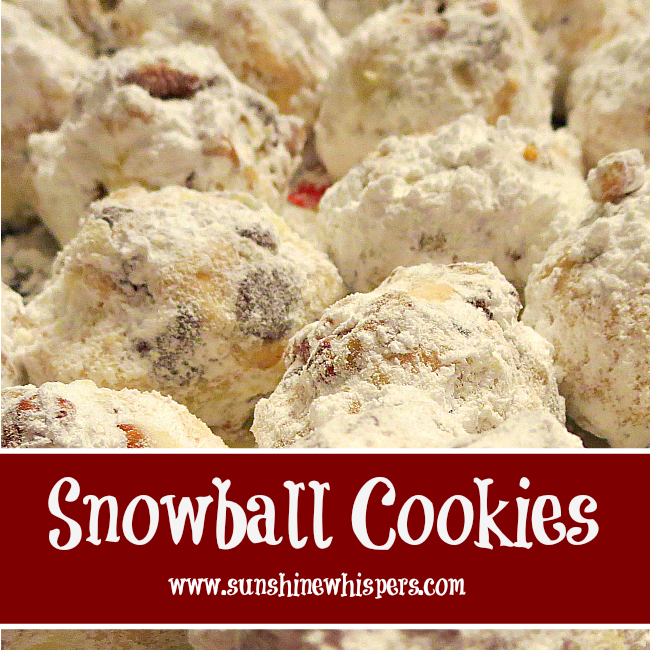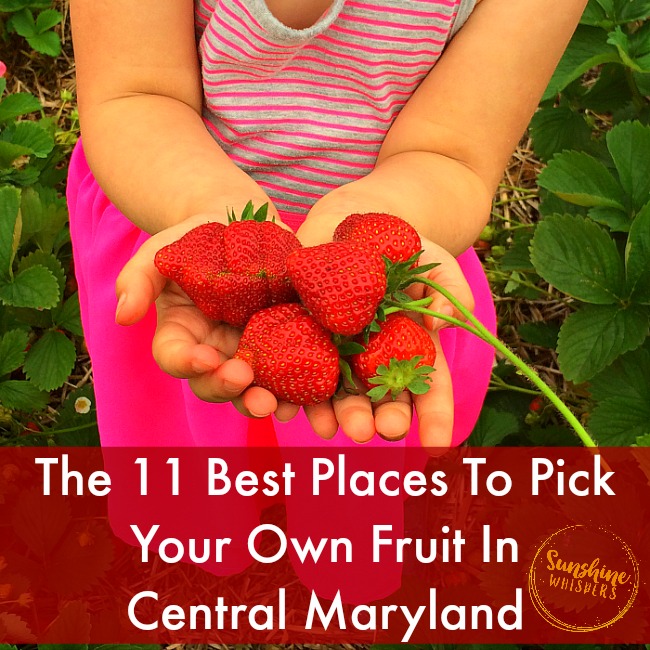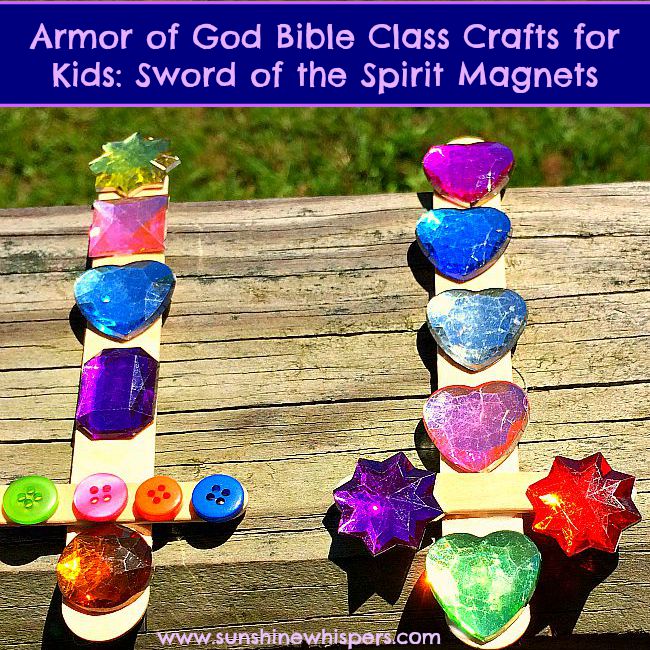Writing Principles for Bloggers: Bottom Line Up Front (BLUF)
This week’s post on Writing Principles for Bloggers is a topic that is near and dear to my heart as an editor: Bottom Line Up Front, or BLUF. Should bloggers use BLUF in order to improve their writing? Is BLUF always appropriate to use? Read on to find out what BLUF is, why it is important, and when you should use it.

Writing Principles for Bloggers: Bottom Line Up Front (BLUF)
Let me ask you a question: Have you ever found yourself talking to someone who could not get to the point? Was it frustrating? How quickly did you tune them out?
Now let me ask you another question: What happens when you read an article or a blog post that promises to make your life better, but after reading a few paragraphs, you can’t figure out why or how? Do you read to the end or do you move on, frustrated that you just wasted your time?
I know what I do.. and I bet I know what you do too. You see, unlike with face-to-face communication, unless there is a reason for me to keep reading, I will move on. Life is short.
As a blogger, do you want to keep your readers engaged and coming back for more? If so, I would love to tell you about a little concept called Bottom Line Up Front, commonly referred to as BLUF.
What is BLUF?
Simply put, writing with the bottom line up front tells your readers right away what your post or article will give them if they read on. Here are some of the features of BLUF:
- Tell your reader what the ‘so what’ is in the first paragraph.
- Tell your reader what they should expect from your article:
- If you are writing about a craft, recipe, or activity, briefly describe it in the first paragraph.
- If you are writing a parenting article, summarize your conclusion in the first paragraph.
- If you are writing a how-to, tell the reader what they will learn.
- Tell your reader why your post should matter to them. Why should they care? Obviously, a butterfly craft I do with my 2 year old is not going to solve world peace. However, to the Mom looking for a cute project to do, they might care that it was super quick, or easy for a young child to create.
Why is BLUF important?
Think about how you use your time. Do you like to waste it on activities and tasks that provide no value to your life? Of course not! Every time a reader clicks on your blog, they are asking themselves:
- Do I need to read this?
- Do I need to act on this?
- Does this message resonate with me?
- Will I get something out of this?
You want their immediate answer to be an emphatic ‘YES!’
Don’t make your readers work to find the meaning your brilliant article will provide for their lives. If they have to work at it, they just won’t. Too much work = not worth their time. They will move on and find a more entertaining or relevant article to read.
The Mechanics of Writing with BLUF
Traditionally (and probably in most academic writing you did in school), any conclusions or recommendations are reserved for the end of the article. Writing with BLUF doesn’t necessarily mean you can’t provide conclusions or recommendations at the end. However, it does mean that you will include them in an abbreviated, and more succinct, form at the beginning of your post.
BLUF and Google
Isn’t that a perfect reason, in and of itself, to practice BLUF? It seems that if Google wants you to tell them what the most important take away from your post is at the outset, your readers probably want the same thing.
When is BLUF not Appropriate?
Well, this is a trick question.
It depends on whether you are writing to inform or writing to influence/entertain. Writing to inform is easy– for instance, I told you up front what this post was about. After reading both the title and the first sentence you had no doubt as to what you would get from reading more. Other examples of writing to inform might include:
- Craft, activity, or recipe posts
- Travel posts
- DIY/’How-to’ posts
- Advocacy (this can be both– see below) about a certain topic
- Educating your reader
- List posts
- Round-ups
- Parenting posts that will solve a problem
- A Bible Study
What if you are writing to influence or entertain though? Does using BLUF mean your opener has to be bland and formulaic? Absolutely not! Many times when you are writing to influence or entertain you want an emotional appeal, a hook that will suck your reader in. Examples of writing to influence or entertain might be:
- A highly personal story
- A devotional or faith-based post
- Advocacy that is primarily appealing to the reader’s heart or emotions
- Parenting posts that talk about a problem or issue where the primary goal is to build community instead of give answers
- Satire
Ultimately you have to write in a style that works for you and your blog. However, I urge you to consider how using BLUF could not only improve the impact of your writing from Google’s perspective, but also how you could provide more impact and more value-added to the lives of your readers. And really.. at the end of the day, isn’t that what blogging is all about?
Thank you again for reading! In next week’s post I will talk about your ‘customers’ and what it is that they need.
In the meantime, have a great week!
Sara



